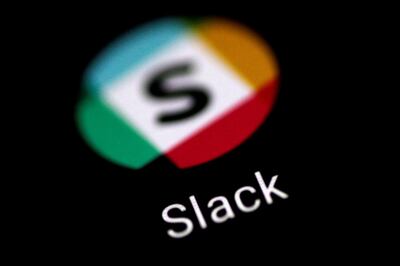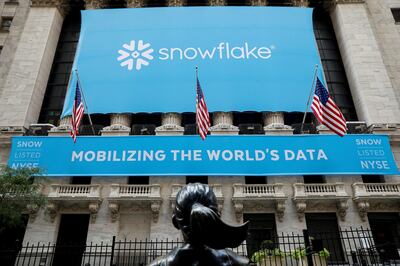Like other industries, the IPO market is seeing its fair share of disruption. The recent high-profile public listings of tech firms Palantir and Asana is clear evidence of the change that is afoot. The tech unicorns created a buzz when they opted for the direct listing path to the public market in September, eschewing the more traditional initial public offering alternative.
So far, only two other notable firms have chosen the direct listing model. The first is Swedish music streaming giant Spotify Technology, which went public through direct listing in 2018. Collaboration software company Slack Technologies used the same manoeuvre in 2019.
It’s widely speculated that the unconventional approach taken by data mining company Palantir and workplace management software firm Asana could pave the way for other private firms to take what some regard as a radically different road to Wall Street.
So, what is direct listing and why are more companies taking this non-traditional route to going public? There’s plenty to unpack about direct listing and the implications for investors.
What is direct listing?
Direct listing is a method for a private company to go public in which it starts to trade without issuing shares at a set offer price, says Jay Ritter, an IPO expert and finance professor at the University of Florida. “Instead, on an appointed day, existing shareholders supply shares and investors demand shares, with a designated market maker determining the price at which supply equals demand for the opening trade,” he says.
Both Asana and Palantir appointed Citadel Securities as their designated market maker and Morgan Stanley as their main financial adviser for their stock market debuts.
Direct listing increases liquidity for existing shareholders and is usually cheaper than an IPO, says Dan Morgan, vice president and senior portfolio manager at Synovus Trust. "The process makes existing stock owned by employees and investors available for the public to buy and does not require underwriters or a lock-up period," he says.
It also means the company performing a direct listing does not raise capital or sell shares, or go through a book-building process, to make their shares available for public trading, says Mark Cash, an equity analyst at Morningstar. Instead, employees and early investors are simply able to sell their stock holdings when trading begins on the first day.
Why do companies take that route?
There are several reasons why companies choose direct listing. The most common ones include a quicker process, lighter regulatory scrutiny and, most importantly, saving a tonne of money in investment banking fees. “Direct listing helps companies avoid hefty fees paid to investment banks,” says Mr Morgan. “Unlike an IPO, in which the share price is negotiated beforehand, in a direct listing, the price of the stock depends solely on supply and demand.”
A traditional IPO, wherein an investment banking firm or firms act as intermediaries and set the offer price, is simply too expensive. “In the US this year, the average fee has been $25 million, and the average price change on the first day, measured from the offer price to the closing price, multiplied by the number of shares offered, has been $175 million,” says Mr Ritter. He refers to this number as the “money left on the table”.
Adding up all the costs of going public gets a total of $200 million, says Mr Ritter.
In a traditional IPO, a company issues additional shares of stock, which can reduce both the value of existing investors’ shares and their proportional ownership of the company, a process known as dilution. Direct listing allows existing stockholders to sell their stock without its value getting diluted by new shares created in an IPO.

Direct listing vs IPOs
The major difference between a direct listing and an IPO is that the former sells existing stocks while the latter issues new shares. “The goal of companies that become public through a direct listing is not focused on raising additional capital, which is why new shares are not necessary,” says Mr Morgan.
In a traditional IPO, an underwriter determines a price at which an IPO will be offered. The process is called book-building. “The investment banks fill a notebook with the orders from institutional investors and then recommend an offer price to the issuing firm,” says Mr Ritter.
There is usually excess demand at the offer price, fuelled by an expectation of initial pop. The investment bankers “generally give most of the underpriced shares to their most profitable clients”, Mr Ritter says, pointing out that many of these clients are hedge funds that compete to be a highly profitable client by overpaying the fees on other trades. “Thus, the investment bankers make money not only from the gross spread, but also from the overpayments that hedge funds give them on other trades.”
With direct listings, there are no underpriced shares to hand out, and “shareholders are able to sell at a higher price”, explains Mr Ritter.
Another difference is that the direct listing process does not have the lock-up period that applies to IPOs.
Reference price vs IPO price
A reference price and IPO price are price points at which the stock will begin trading. “The reference price in a direct listing is largely based on the prices at which recent private market transactions have occurred to give some guidance to potential investors about what to expect,” says Mr Ritter.
In general, no shares change hands at the reference price. By contrast, with the offer price of an IPO, that is the price at which shares trade.
Morningstar’s Mr Cash says it’s the stock exchange that sets the reference price, historically looking at past private transactions, but adds “this value is not the price at which the direct listing will begin trading”.
An IPO price, on the other hand, is determined in the book-building process and is the price that company sells to institutional investors. “Then there’s the listing price of the stock price when trading starts for public,” Mr Cash adds.
What does this mean for investors?
“A direct listing allows potential investors to participate in an issuance of stock without all the hype from an underwriter,” Mr Morgan says. “Underwriters typically allocate shares of ‘hot’ IPOs to their top clients, forcing interested buyers to purchase shares in the secondary market at a higher price than the insiders.”
On the flip side, a direct listing, creates a level playing field that gives all potentials buyers an equal shot at buying stock at the reference price, Mr Morgan says.
“With both traditional IPOs and direct listings, once the stock starts trading, there are no free lunches,” Mr Ritter says. An investor should only buy if they think that the price is right, he adds.
One key benefit of direct listings, Mr Cash says, is that “investors have access to more companies that could have possibly stayed private for a longer period of time”.
Could direct listings buck the IPO trend?
Some market observers feel if Asana and Palantir succeed with the direct listing route, they could open the doors for other private companies looking to make their way to stock markets.
However, it’s too early to say if the recent direct listings could alter the IPO landscape, says Mr Morgan. “[The] jury is still out on the direct benefits of direct listing versus an IPO, [but] my initial thoughts on the Palantir and Asana direct listings is that even though both stocks traded above their reference prices, neither stocks soared to the heights of Snowflake and JFrog IPOs weeks before,” he says.
All four stocks were software companies but Snowflake and JFrog rose substantially higher than their IPO prices. Historically, while Spotify was a success, Slack has been a disappointment, even though both took the direct listing road to the market, Mr Morgan says.

Ultimately, direct listings or merging with a special purpose acquisition company give companies alternatives to an IPO. “The investment bankers will have to make traditional IPOs cheaper, or private companies will use these alternative methods of getting listed,” Mr Ritter claims.
Mr Cash appears more sanguine that the direct listings trend could take hold. “I’d expect direct listings to be more prevalent as firms become more comfortable with the practice and [stock] exchanges embrace the notion,” he says.
Going public is an effective way for companies to evolve and grow. An IPO no longer provides them the only path to go public. The highly anticipated market debuts of Airbnb, Robinhood and DoorDash will be closely watched both by investors and other private companies waiting in the wings.

